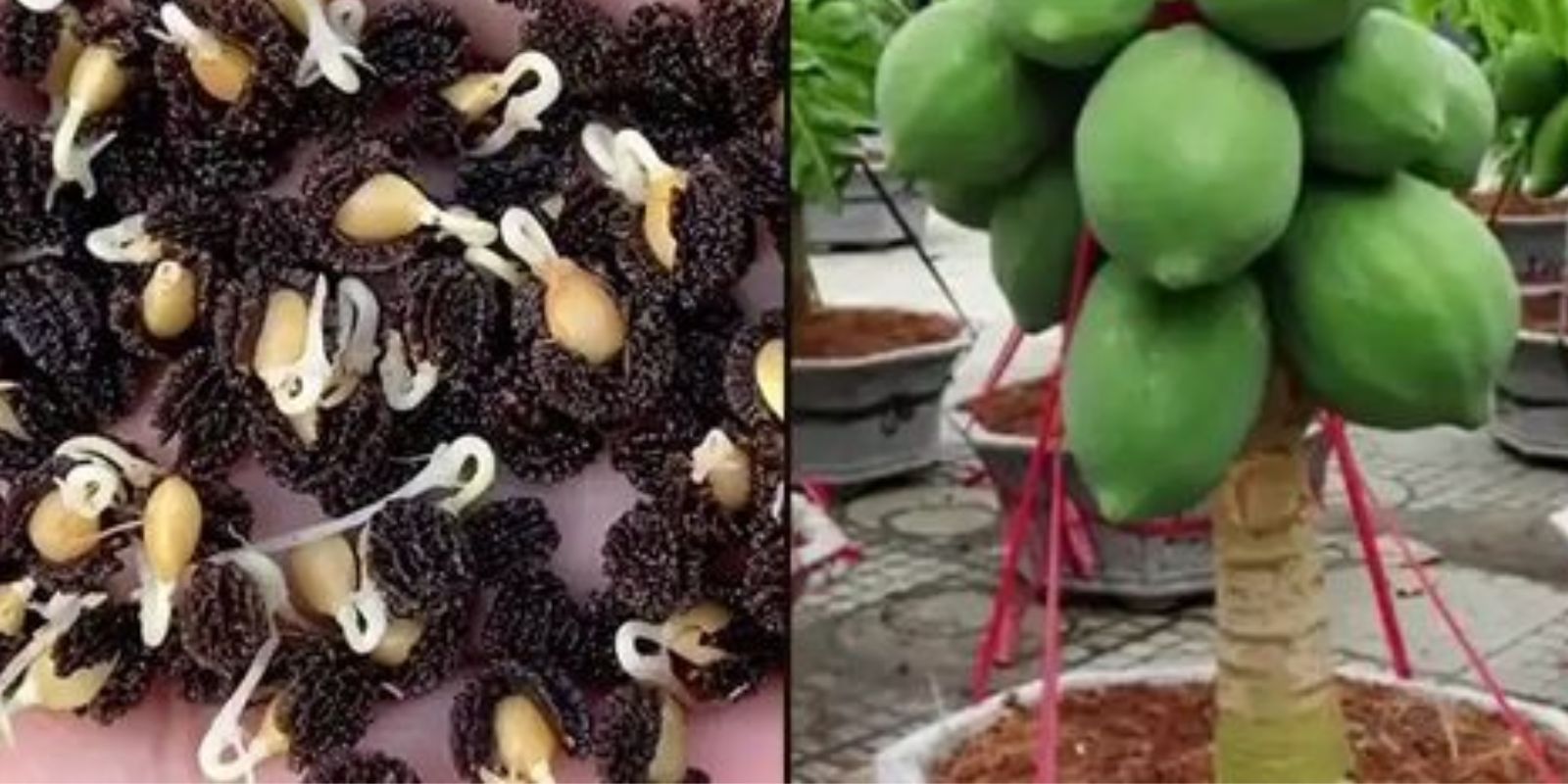Growing tropical fruits like papaya (Carica papaya) at home can be a rewarding endeavor, especially when you have limited garden space. Papayas are not only known for their delicious flavor but also for their nutritional benefits, packed with vitamins, antioxidants, and enzymes that aid digestion. By cultivating papaya in pots, you can enjoy fresh, homegrown fruits right from your own garden, regardless of where you live. This comprehensive guide will walk you through the steps to successfully grow papaya in containers, ensuring a bountiful harvest season after season.
Why Grow Papaya in Pots?
Papaya plants thrive in warm climates, making them ideal candidates for container gardening in regions with cooler temperatures or limited outdoor space. Here are some reasons to consider growing papaya in pots:
- Space Efficiency: Papayas can grow quite large but can be managed in pots, making them suitable for balconies, patios, or small gardens.
- Controlled Environment: Pots allow you to control soil quality, drainage, and sunlight exposure, optimizing growing conditions for healthy plants.
- Fresh, Homegrown Fruits: Enjoy the satisfaction of harvesting ripe papayas directly from your garden, knowing they are free from chemicals and pesticides.
Steps to Cultivate Papaya at Home in Pots
Follow these detailed steps to successfully grow papaya in containers and enjoy a continuous supply of delicious fruits:
- Choosing the Right Papaya Variety:
- Dwarf Varieties: Opt for dwarf or miniature papaya varieties suitable for container gardening. These varieties produce smaller plants and fruits, making them easier to manage in pots.
- Hybrid Varieties: Consider hybrid papaya varieties known for their compact growth and disease resistance.
- Selecting a Suitable Container:
- Choose a large container with drainage holes to prevent waterlogging. Papayas have extensive root systems, so opt for pots that are at least 15-20 gallons in size.
- Ensure the container is sturdy and can withstand the weight of a fully grown papaya plant.
- Preparing the Potting Mix:
- Use a well-draining potting mix formulated for tropical fruits or create your own mix using equal parts of peat moss, perlite, and compost.
- Add organic matter such as aged manure or compost to enrich the soil and provide essential nutrients for healthy growth.
- Planting Papaya Seeds or Seedlings:
- From Seeds: Plant papaya seeds directly into the prepared potting mix, covering them lightly with soil. Keep the soil consistently moist until germination occurs, which typically takes 1-2 weeks.
- From Seedlings: If starting with seedlings, gently transplant them into the center of the pot. Ensure the root ball is covered with soil and water thoroughly after planting.
- Watering Requirements:
- Papayas require regular watering to keep the soil evenly moist, especially during hot weather. Water deeply when the top inch of soil feels dry, but avoid waterlogging, as papayas are susceptible to root rot.
- Mulch around the base of the plant to retain moisture and regulate soil temperature.
- Light and Temperature Needs:
- Place the papaya pot in a sunny location where it can receive at least 6-8 hours of sunlight daily. Papayas thrive in warm temperatures between 70-90°F (21-32°C).
- Protect papaya plants from strong winds and provide shelter if grown in areas with intense sunlight or temperature fluctuations.
- Fertilizing Routine:
- Feed papayas with a balanced fertilizer every 2-3 months during the growing season to promote healthy growth and fruiting. Choose a fertilizer high in potassium to support fruit development.
- Alternatively, use organic fertilizers such as fish emulsion or compost tea to provide nutrients naturally.
- Pruning and Maintenance:
- Prune papaya plants to remove dead or diseased leaves, suckers, and fruiting stems after harvest to promote new growth.
- Monitor for pests and diseases regularly. Treat any infestations promptly with organic pest control methods to protect your plants.
- Harvesting Papayas:
- Papayas typically start fruiting within 6-9 months after planting. Harvest fruits when they reach mature size and develop a yellowish-orange color.
- Cut fruits from the plant using a sharp knife or pruning shears. Papayas will continue to ripen after harvesting if kept at room temperature.
Motivation for Interaction
Cultivating papaya in pots is not only a practical way to enjoy fresh, homegrown fruits but also a fulfilling gardening experience. Share your successes, ask questions, and connect with fellow gardeners in our community to learn more about growing papayas at home. Together, we can explore the joys of container gardening and celebrate the satisfaction of harvesting delicious papayas from our own gardens. Let’s nurture our green thumbs and embark on a journey to grow healthy and thriving papaya plants in pots! 🌿🍈

